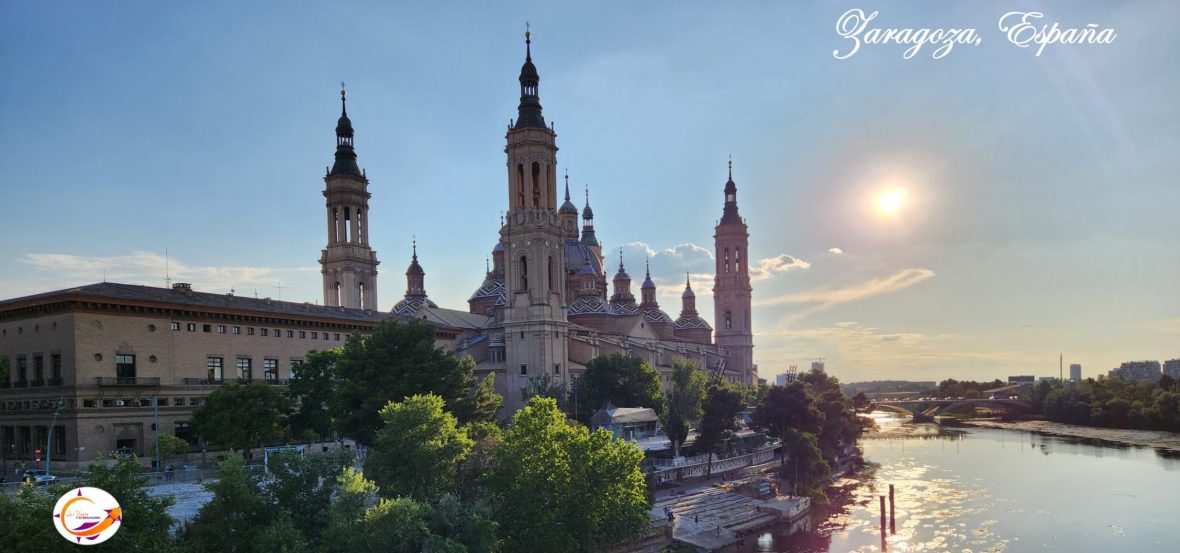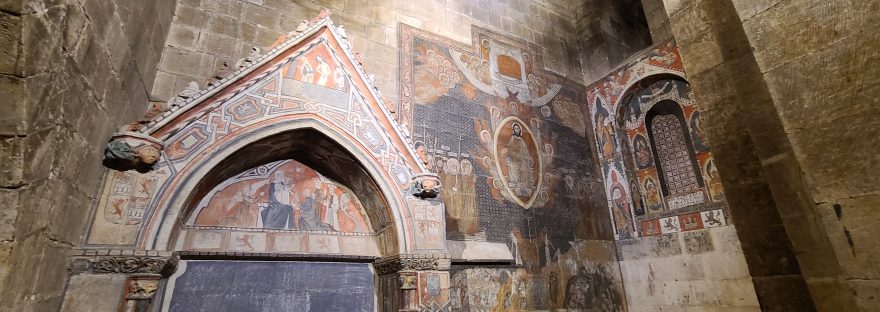Six cities in Spain have two cathedrals and Salamanca is one of them. Some of these are built separately and others, as in the case of the cathedrals of Salamanca, may be united. The reality is that, for nearly four hundred years, the Old Cathedral and the New Cathedral have lived together as one. And, although they may appear to be a single structure, the truth is that each has its own separate history and so we will treat them as such. For obvious reasons, it is with the Old Cathedral of Salamanca that we begin the first part of this article.
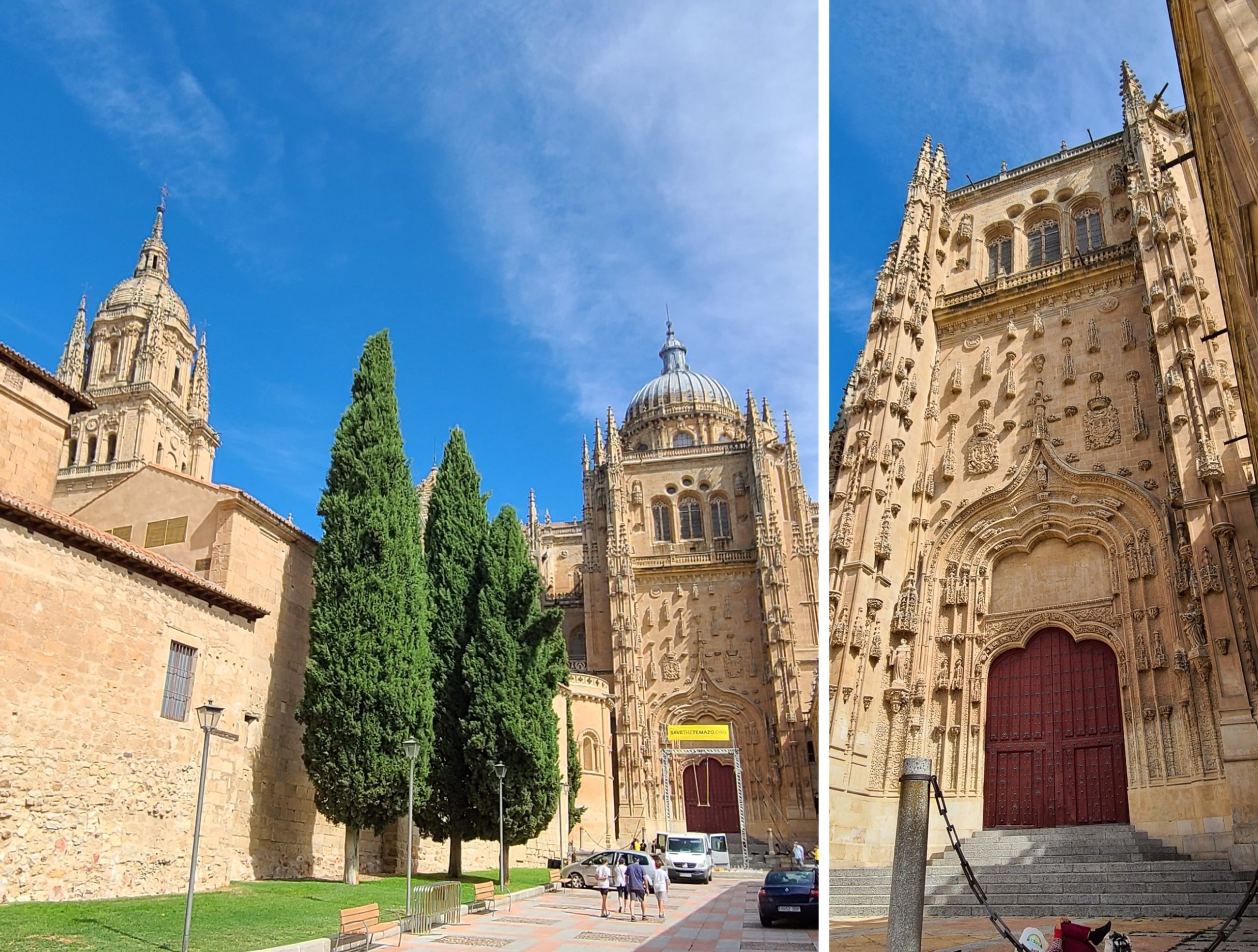
The construction of the Old Cathedral of Salamanca, dedicated to Santa María de la Sede, began in the first third of the 12th century and was finished at the end of the 14th century. The temple, presents a very remarkable Romanesque style, which is crowned with vaults of transition to the Gothic style. Its plan is of the basilica type, in the form of a Latin cross, with three naves, a marked transept and a chevet formed by three semicircular apses, which show windows with semicircular arches on the exterior.
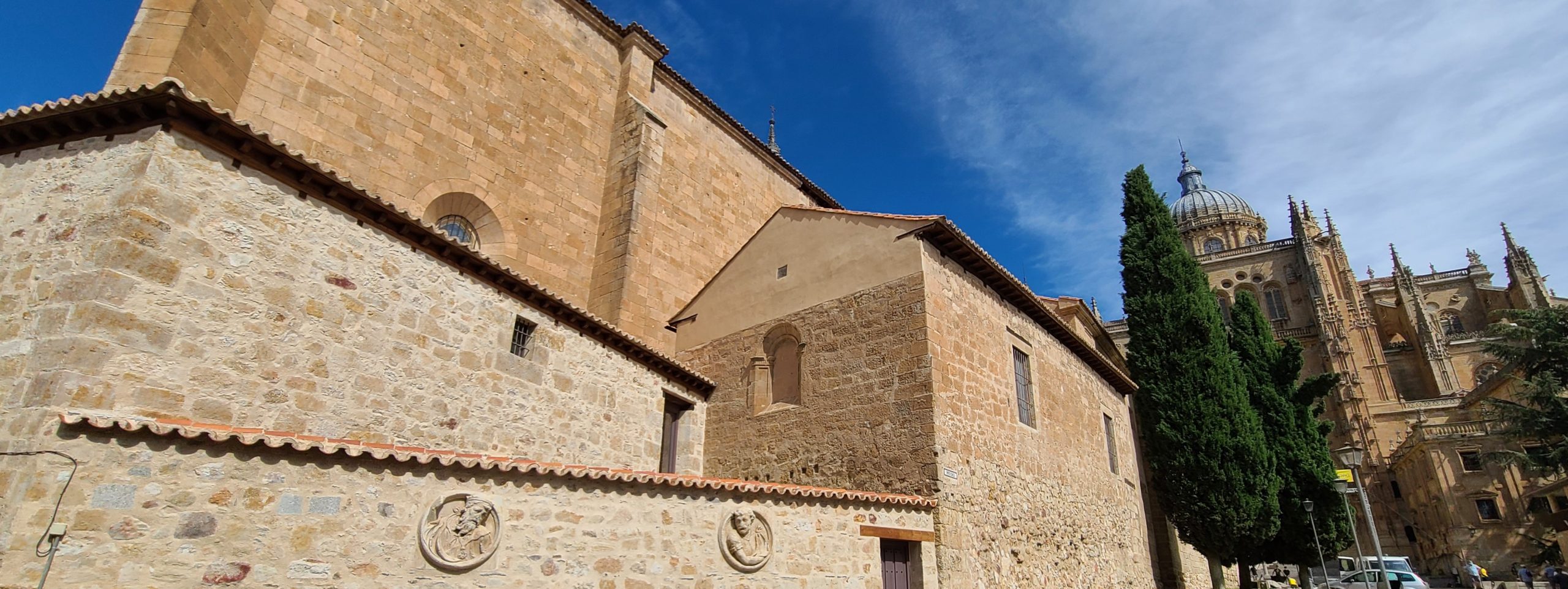
Given the frontier character of Salamanca, the Old Cathedral was also designed as a fortress, popularly known as “fortis salmantina”. Although, that characteristic is no longer so notable with the disappearance of the battlements of the Mocha Tower and the change suffered in the roof of the nave, which originally was a terrace or walkable roof, to later install an Arab roof.
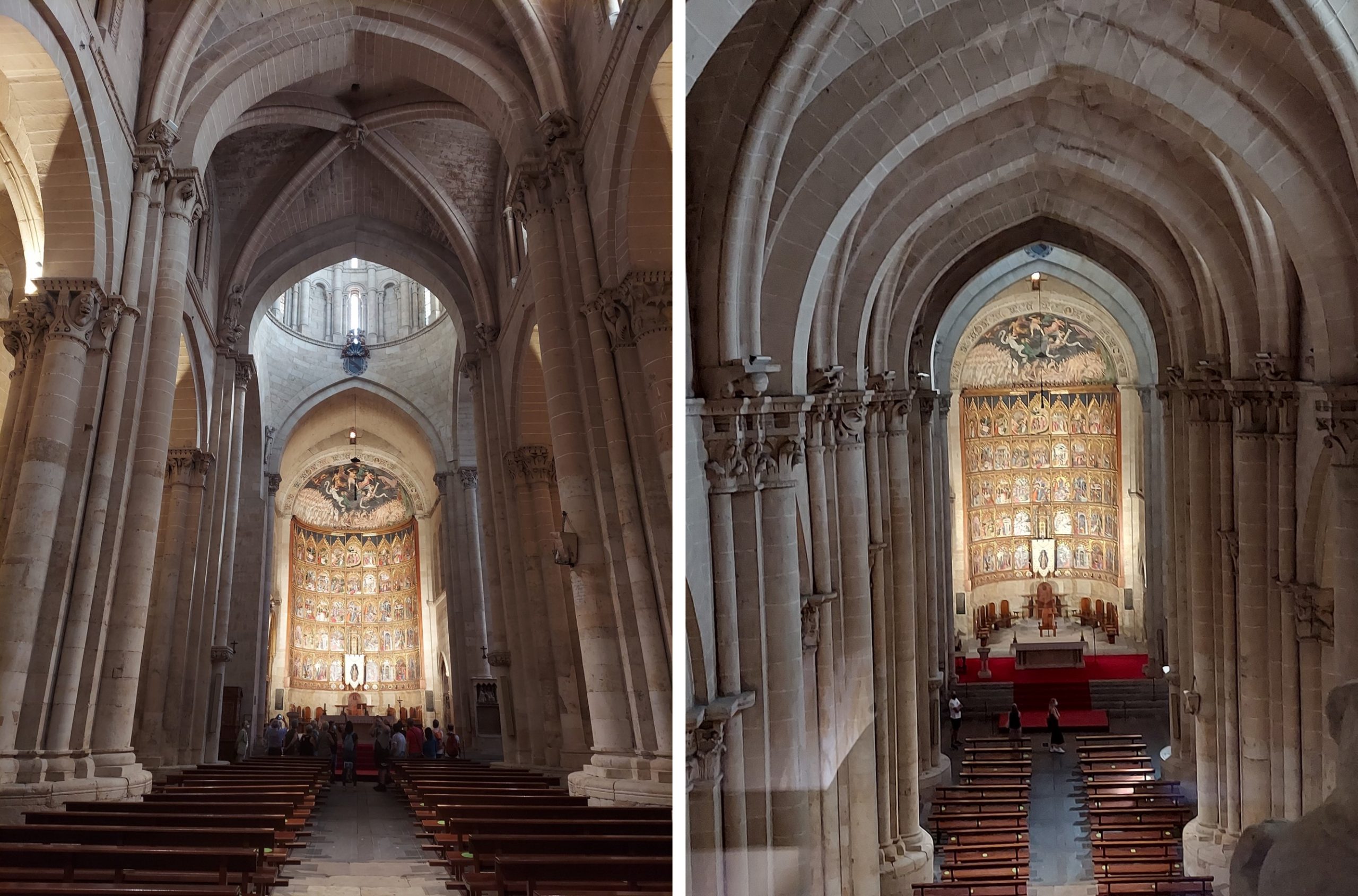
Among the attractions of the Old Cathedral, in the Main Chapel is the main altarpiece from 1430, and the fresco painting from 1445 that is located on the upper level of the altarpiece. Both pieces have been attributed to the Delli brothers. The altarpiece presents a cycle of the life of the Virgin Mary and Jesus Christ, from the Birth of the Virgin to the passage of the Mother of Christ, all accompanied by scenes from the life of Jesus and crowned by the magnificent work of the Last Judgment.
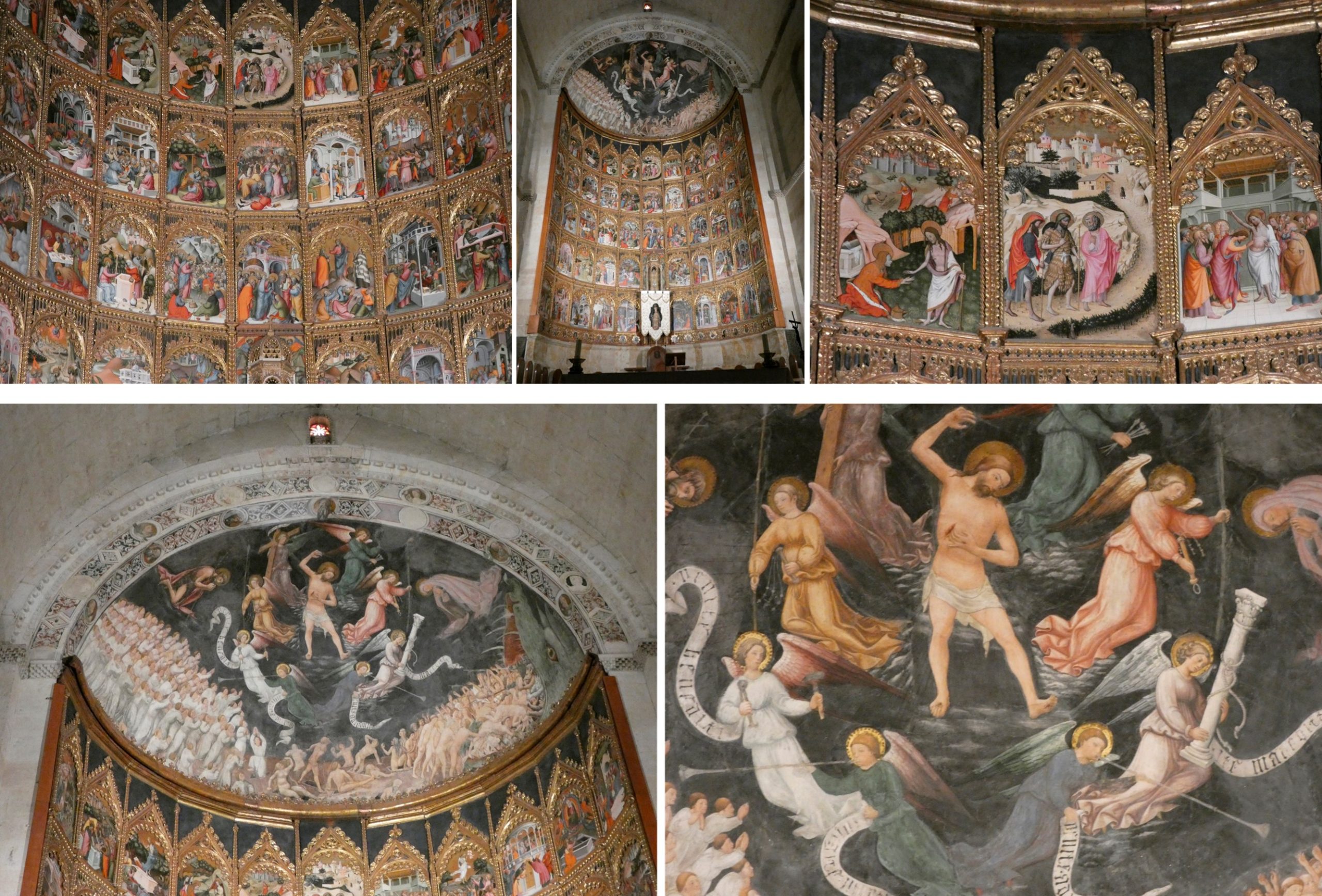
The altarpiece of the Old Cathedral of Salamanca is composed of fifty-three tables, distributed in eleven streets (the rows that are formed vertically) and five bodies or heights, with an established order from bottom to top and from left to right. In the sphere of a room that crowns the altarpiece is the fresco of the Last Judgment. It is a unique piece of furniture in Europe because of its dimensions and because it has remained in the same place where it was placed since its construction.
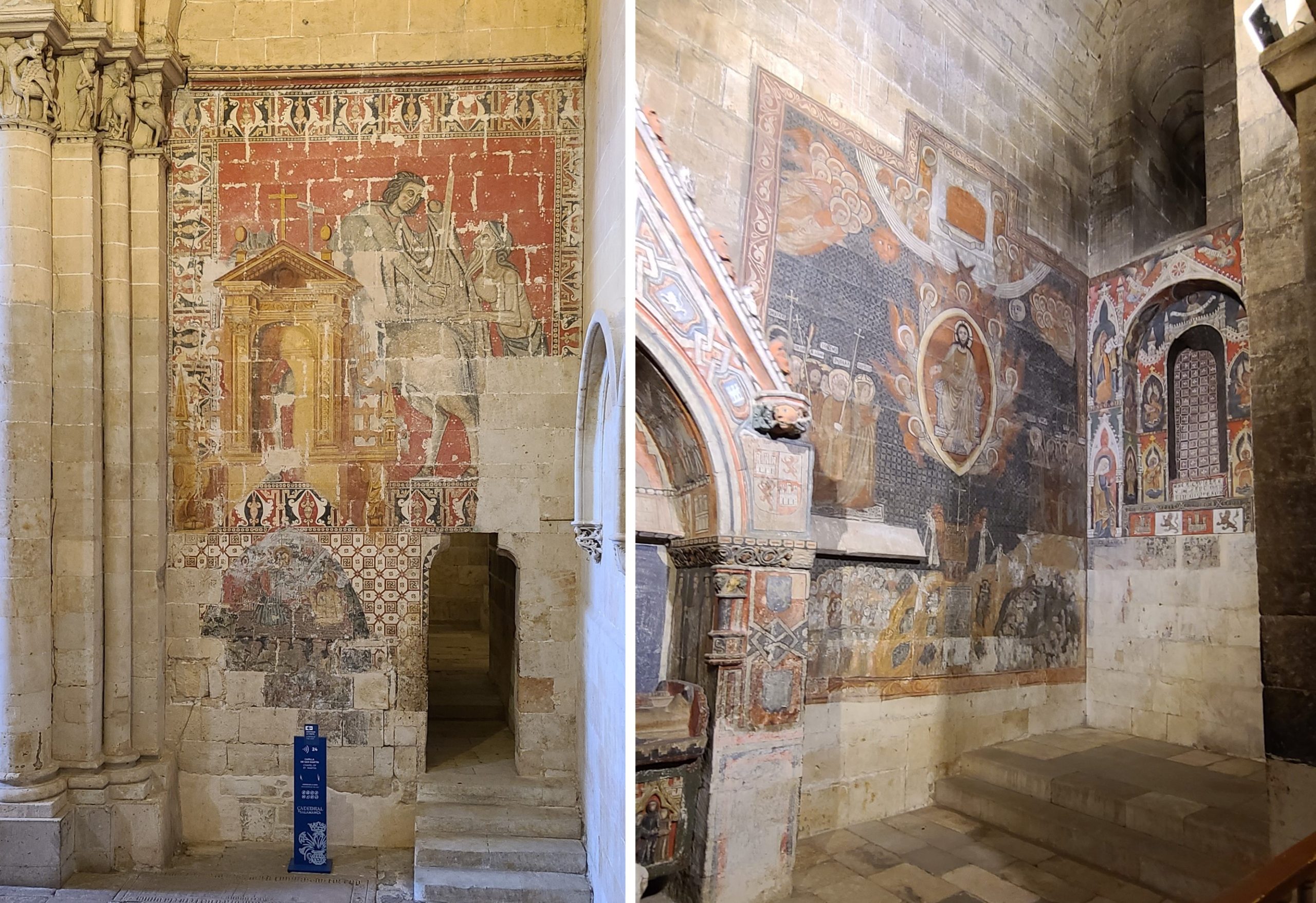
One of the chapels that cannot be missed when visiting the Old Cathedral of Salamanca is the Chapel of San Martín or of the Oil. It is located under the so-called Tower of the Bells, on which the current tower of the New Cathedral was built. Recently, it was discovered just before entering the Chapel, a large painting on the wall of the temple where St. Martin is sharing his cloak.
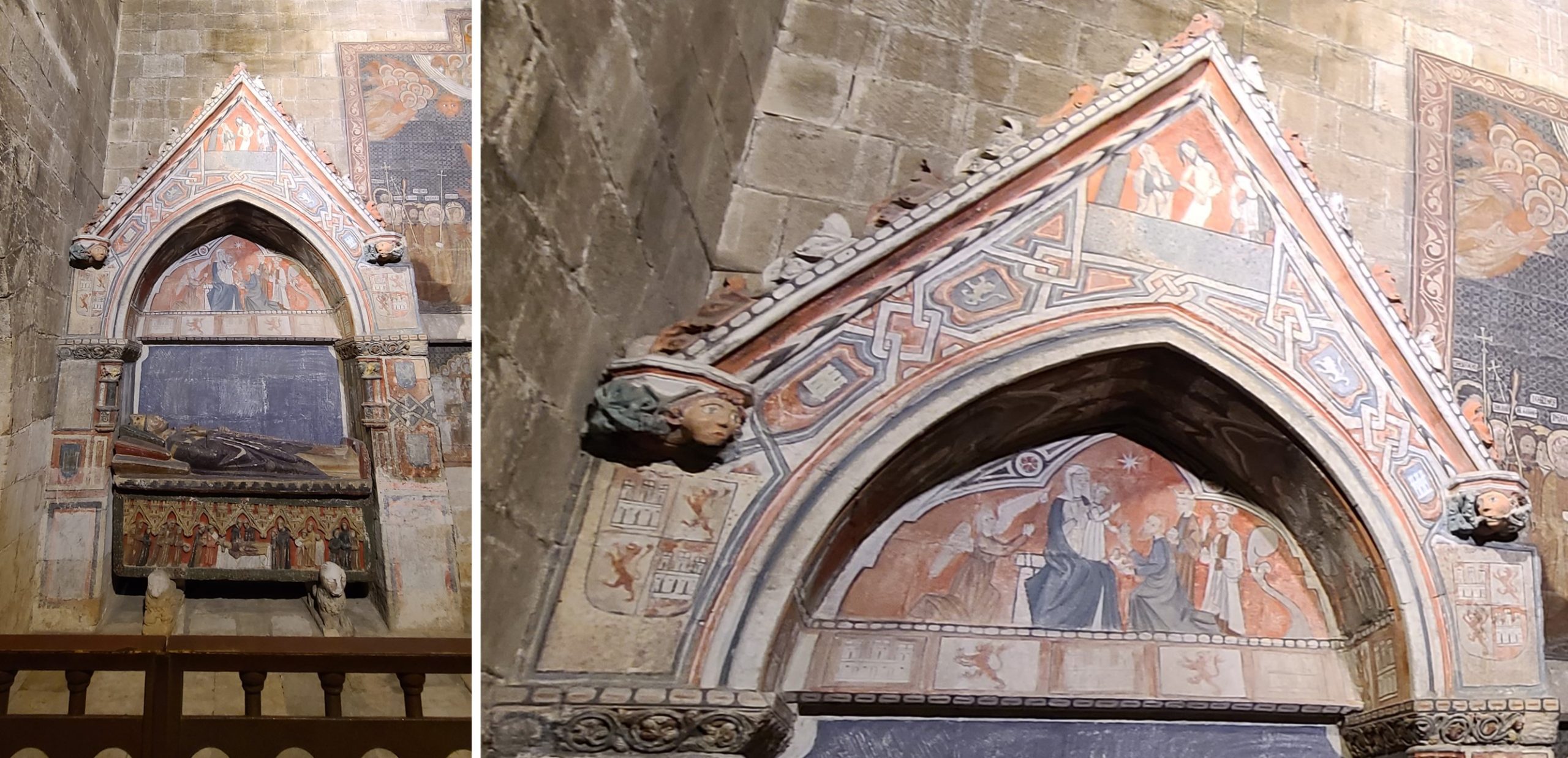
The most interesting thing that this chapel has are some paintings that show the coats of arms of the kingdoms of Leon and Castile, some of which appear dated in the year 1262 and whose author is Anton Sanchez de Segovia. In addition, we can find images such as Jeremiah, Isaiah and Daniel above and St. Joachim and St. Anne below, all of them under architectural arches created with paint using the trompe l’oeil technique, giving the illusion that they are real. Next to these, from the 14th century, the image of the Last Judgment stands out, painted as if it were a tapestry, where Jesus Christ is presented inside an almond, showing hands, feet and side to show the wounds of the passion, accompanied by the Apostles and the Virgin, separating the saved from the damned.
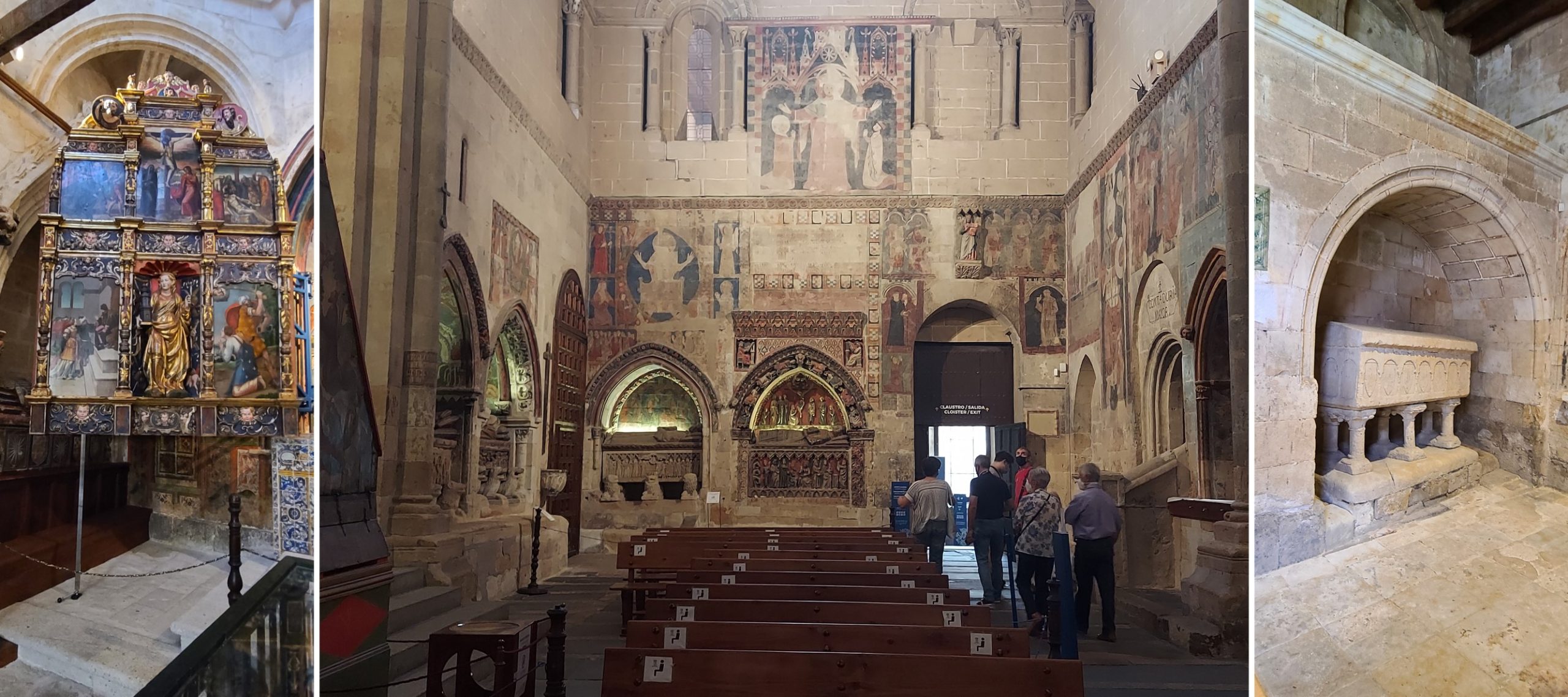
The primitive cloister was damaged in the Lisbon earthquake of 1755 and the reality is that there are no remains that we can appreciate. The present cloister is the result of a later reconstruction, where we can distinguish some frescoes from the 13th-14th centuries that decorate the sepulchres and open a series of chapels. Among the chapels that should be visited are the chapel of San Salvador or Talavera, the chapel of Santa Barbara, with the tomb of Bishop Juan Lucero, where the University degree exams were held, the chapel of Santa Catalina and the chapel of San Bartolomé or Anaya.
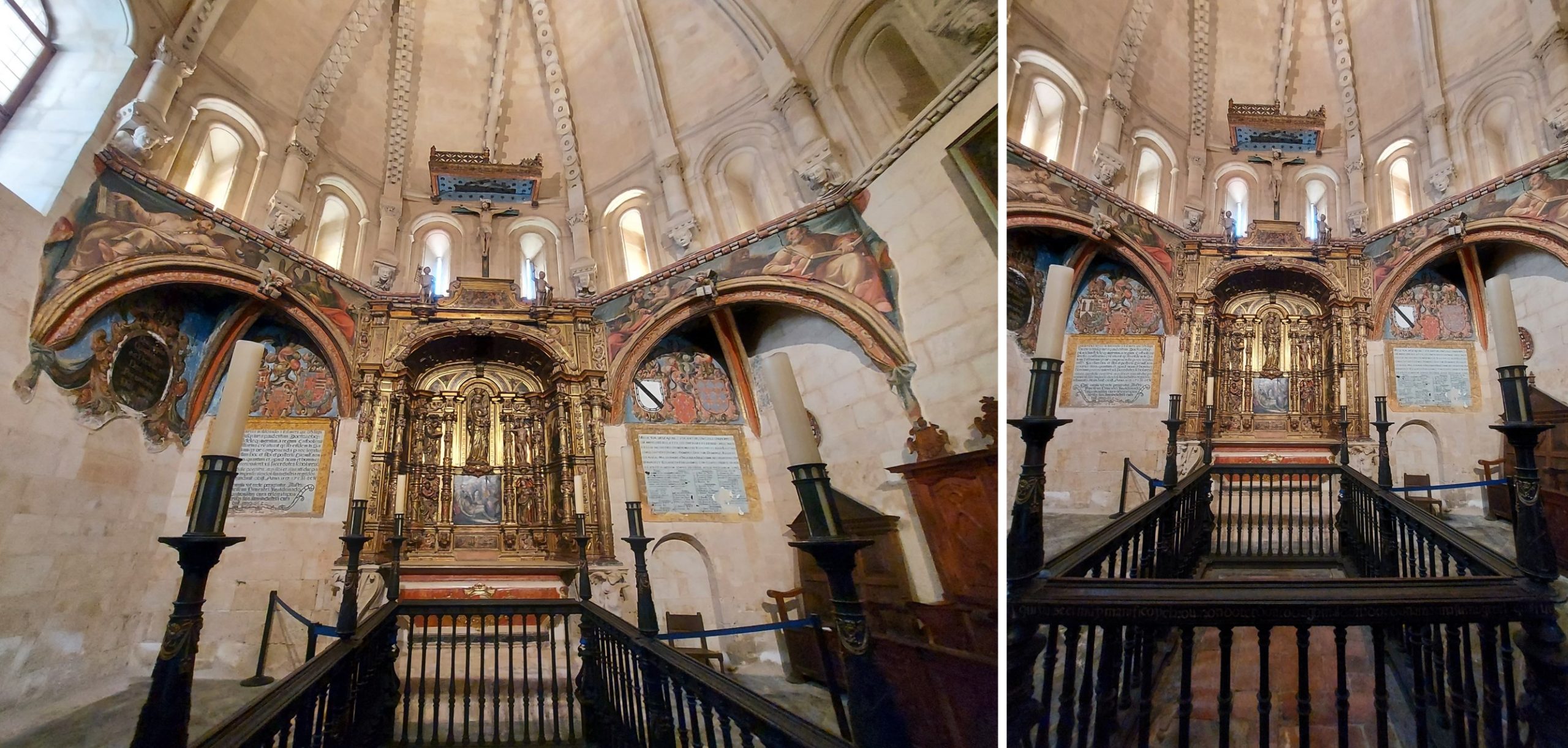
The Chapel of San Salvador or Talavera is the oldest of all the chapels that form the cloister. In its beginnings it was called of the savior, and it was used as a Chapter Hall for the periodical meetings of the canons of the cathedral chapter. Its construction is estimated to have taken place in the year 1180. It is covered with a dome of Mudejar influence, with 16 parallel ribs that form an eight-pointed star in the keystone. In this chapel, founded by Rodrigo Maldonado, a native of Talavera, professor and rector of the University, the Hispanic-Mozarabic *rite has been maintained since the 14th century. The tomb of the founder and that of his wife are in the center of the chapel.
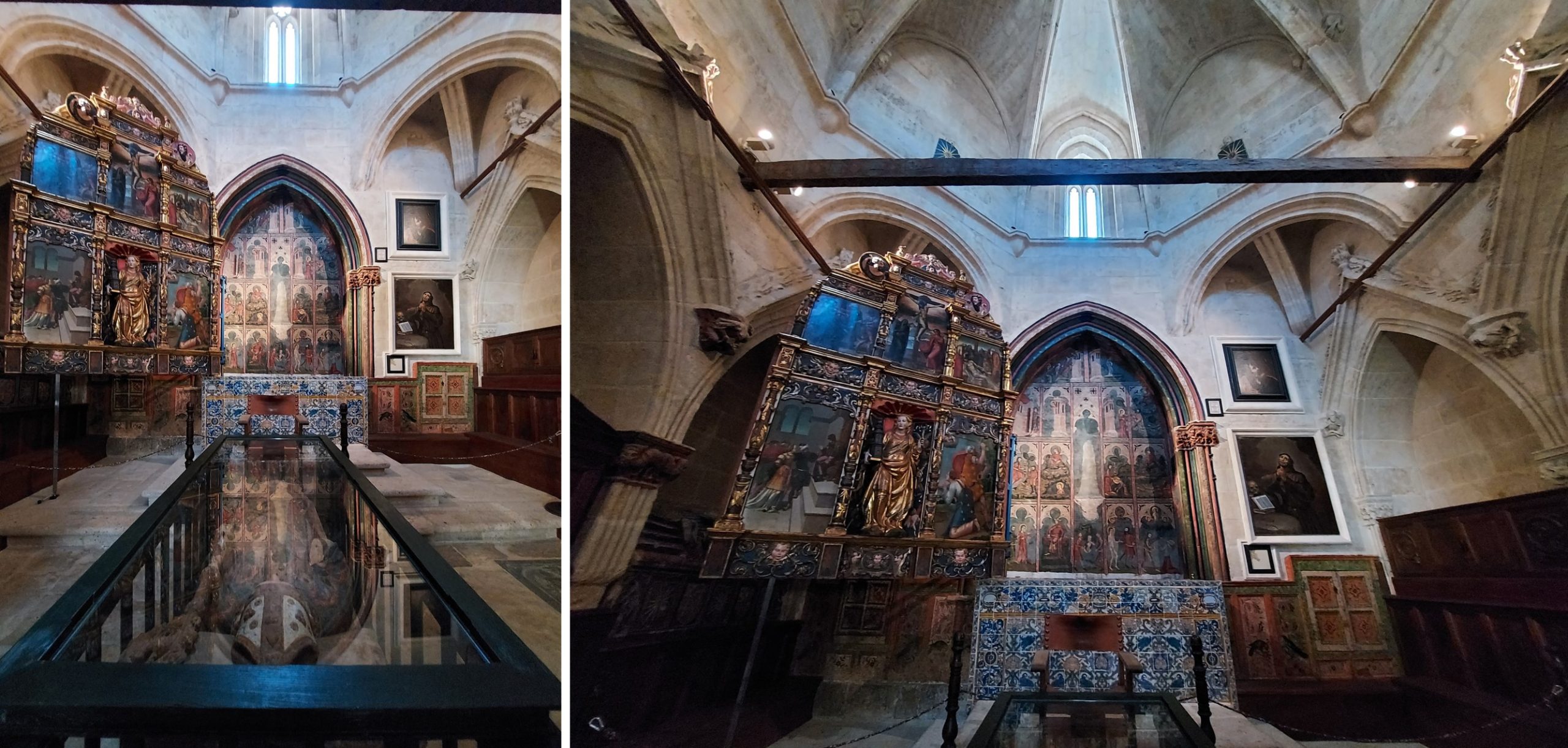
The chapel of Santa Barbara was founded by Bishop Juan Lucero in 1334, whose tomb is in the center, and is decorated with a small altarpiece that includes paintings depicting scenes of the death and passion of Christ and an image of the titular Saint, the latter made in the 16th century. The front of the altar shows a magnificent decoration of Talavera ceramics. Since the beginnings of the University of Salamanca and when the studies were held in the cathedral, this chapel served as a place where the final exams were held.
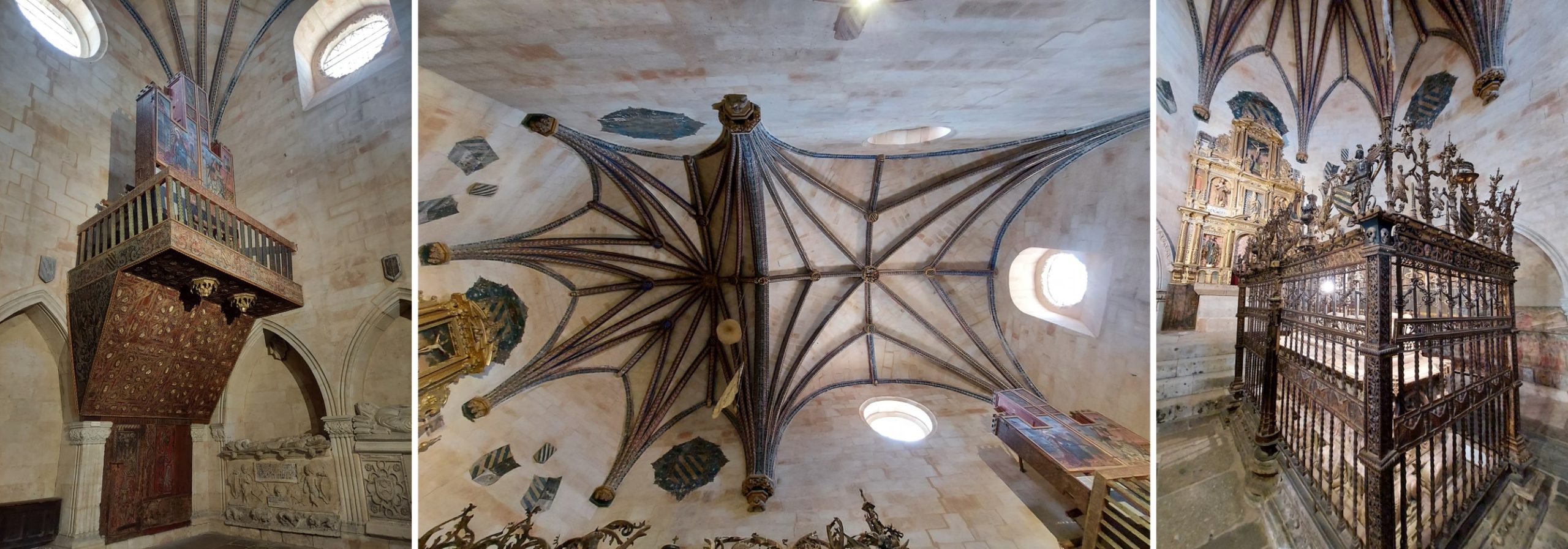
In the central part of the chapel of San Bartolomé or of the Anaya family is the tomb of the founder of the chapel and patriarch of the family, Diego de Anaya, bishop of Salamanca and archbishop of Seville. He was a devotee of San Bartolomé and patron of the arts who founded the Colegio Mayor de San Bartolomé or Colegio Viejo (the oldest in Salamanca). This tomb is made of alabaster, possibly by a German master, surrounded by a beautiful grille also made in the 16th century, full of decoration, especially those alluding to death. Other members of the Anaya family are buried in the same chapel, where two of the tombs conserve the original colors with which they were made.
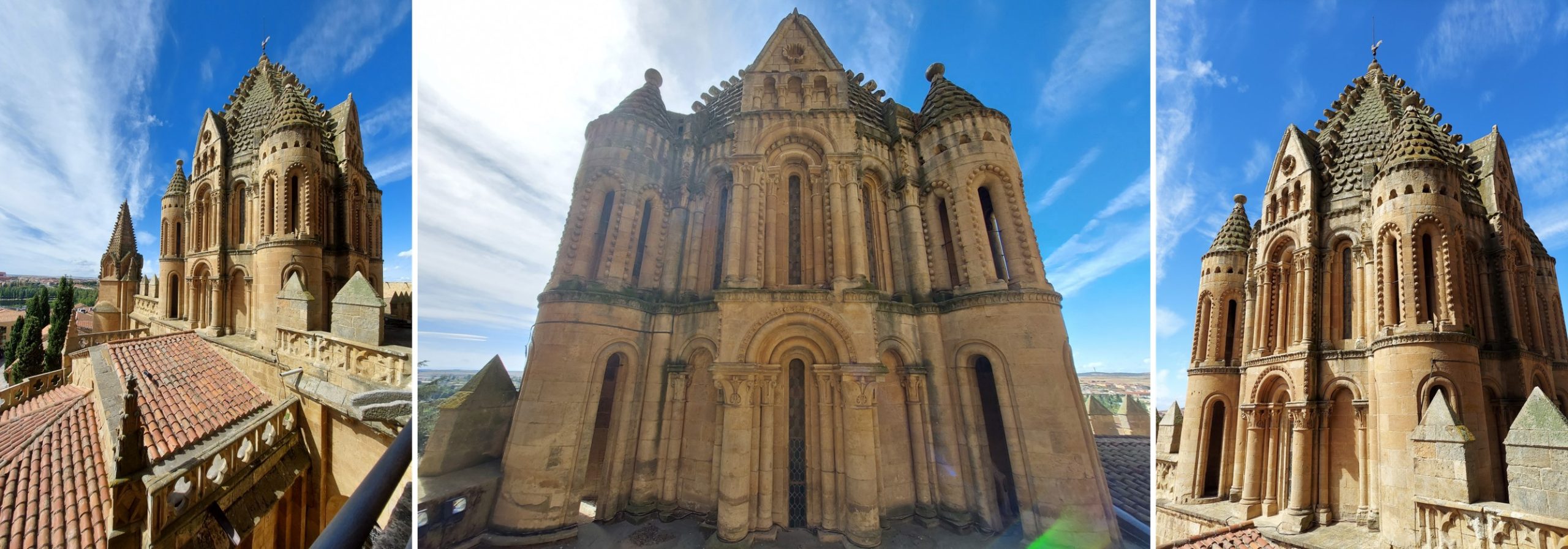
One of the most distinguishing elements of this Romanesque temple is the Torre del Gallo, a beautiful and elaborate dome, which can be admired up close during a visit to the roofs of the cathedral. If you have the opportunity, do it! The date of construction of the dome must be around 1150, being the most outstanding element of the structure, rising above the transept and supported by four impressive pendentives.
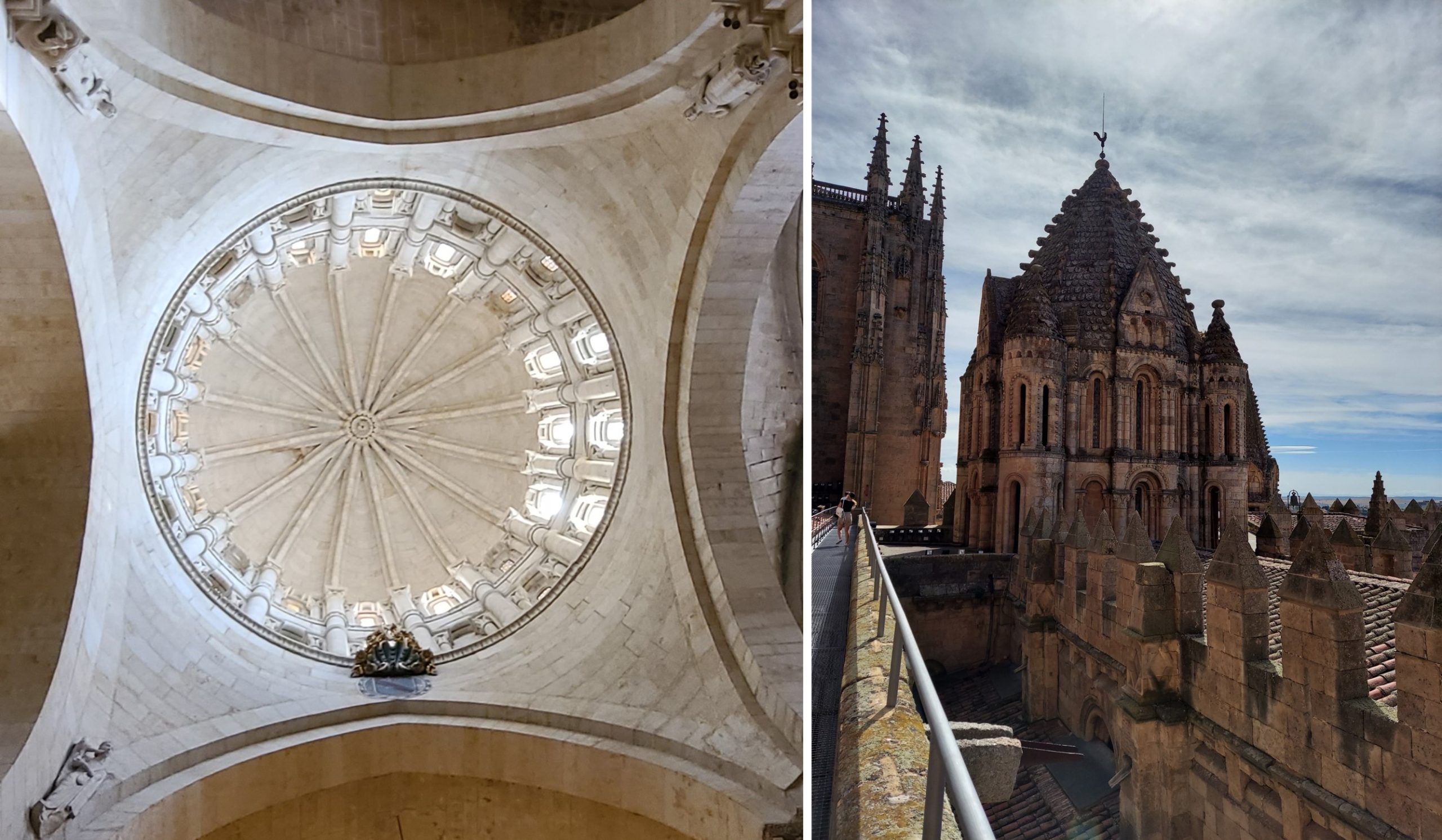
The inner part of the dome of the Old Cathedral is in the shape of an open orange with sixteen segments, while the exterior is almost conical in shape and decorated with scales. This dome is supported by a drum with sixteen columns in the interior, lightened by 32 windows, 16 nerves cross meeting in the central part of the dome.
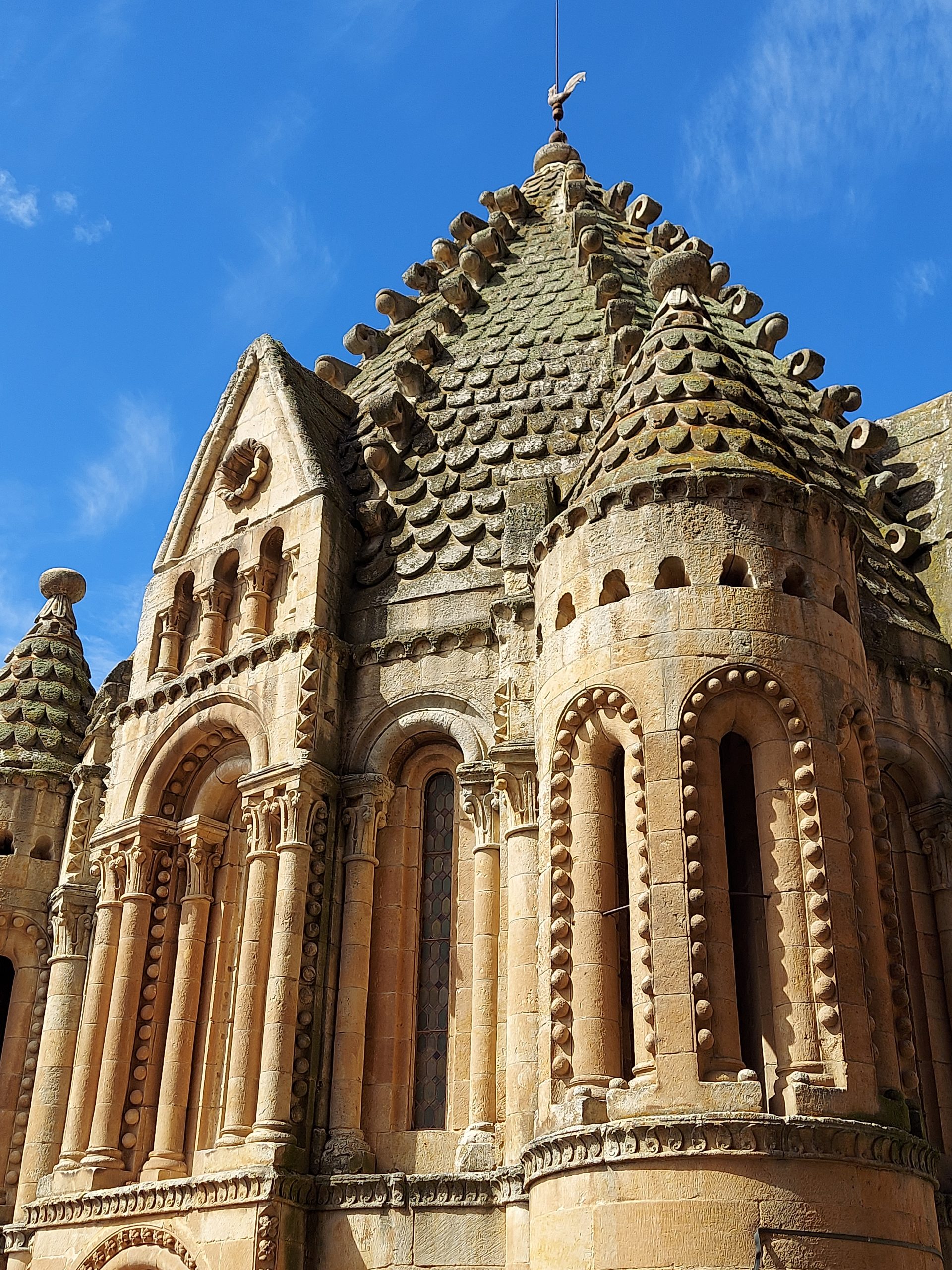
It is popularly known as the “Tower of the Rooster”, since this animal appears in the weathervane that crowns the dome, seated on three balls whose purpose is to defend the dome from possible lightning. The one we see today is not the original. The first one is conserved in the chapel of Santa Catalina of the Cathedral of Salamanca after, in the year 1927, it was decided to install in its place a replica. As for the religious aspect of the rooster, it has become a symbol of faith and hope. The relation of the rooster with Salamanca, it is very probable that it comes from the place where this Old Cathedral is built, since in this area the French were settled. It should be remembered that in the French Revolution, the rooster came to play an important role, becoming the substitute for the dynastic fleur-de-lis.

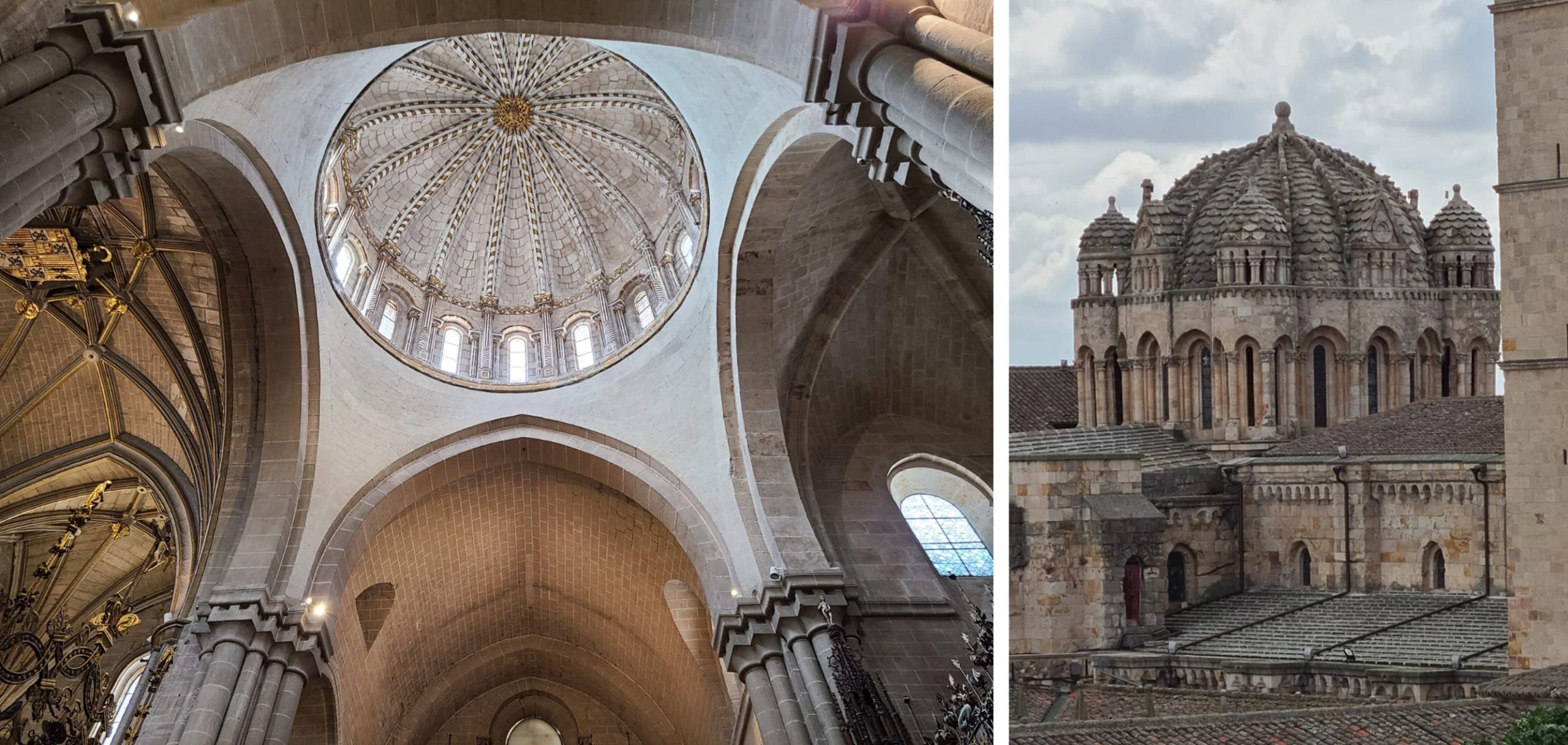
The model of the dome of the dome is based on that of the Cathedral of Zamora, which was the first of the group of dome of the Duero, also called Leonese or Byzantine-Leonese dome. These have a similar structure with two different domes, one on the inside and the other on the outside, between which there would have been a filling of gravel and earth, leaning one on the other. The exterior decoration of flaked form is very curious and at the moment, they have not been able to define in the History of Art, where it comes from.
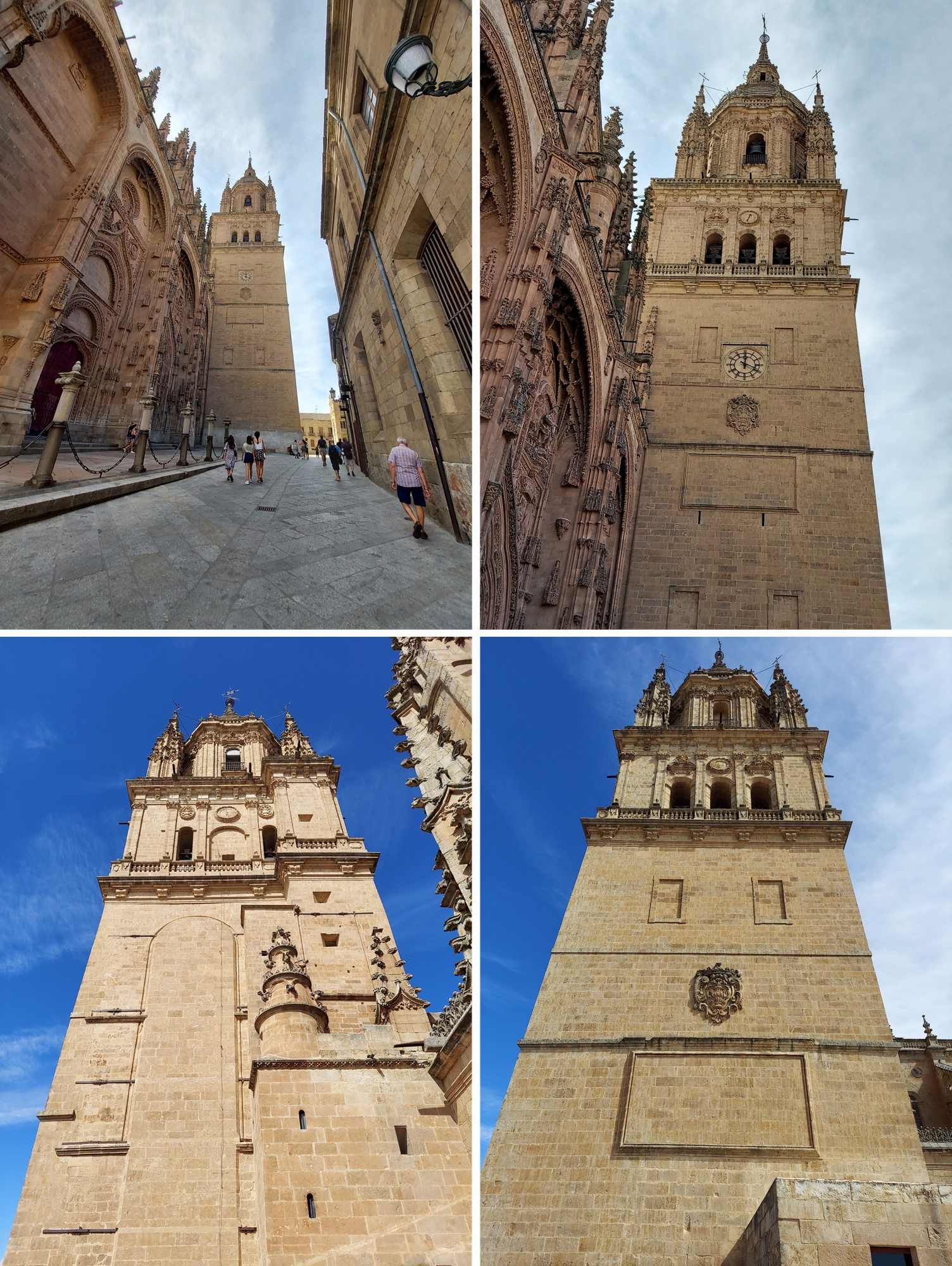
The Bell Tower is square in plan, like its sister, and is shared by both cathedrals. It was part of the façade of the Old Cathedral. From the beginning of the 18th century, this primitive medieval tower underwent recurrent transformations. In 1705, due to a lightning strike, a fire reduced to ashes the entire spire at the top, the wooden floors and melted the bells’ mallets. This fire provoked a rapid popular economic action, which allowed repairs to the tower to begin quickly. Thus it was added from the high cornice, which raised its height for the New Cathedral, adding a third body and a baroque finial that we can contemplate today.
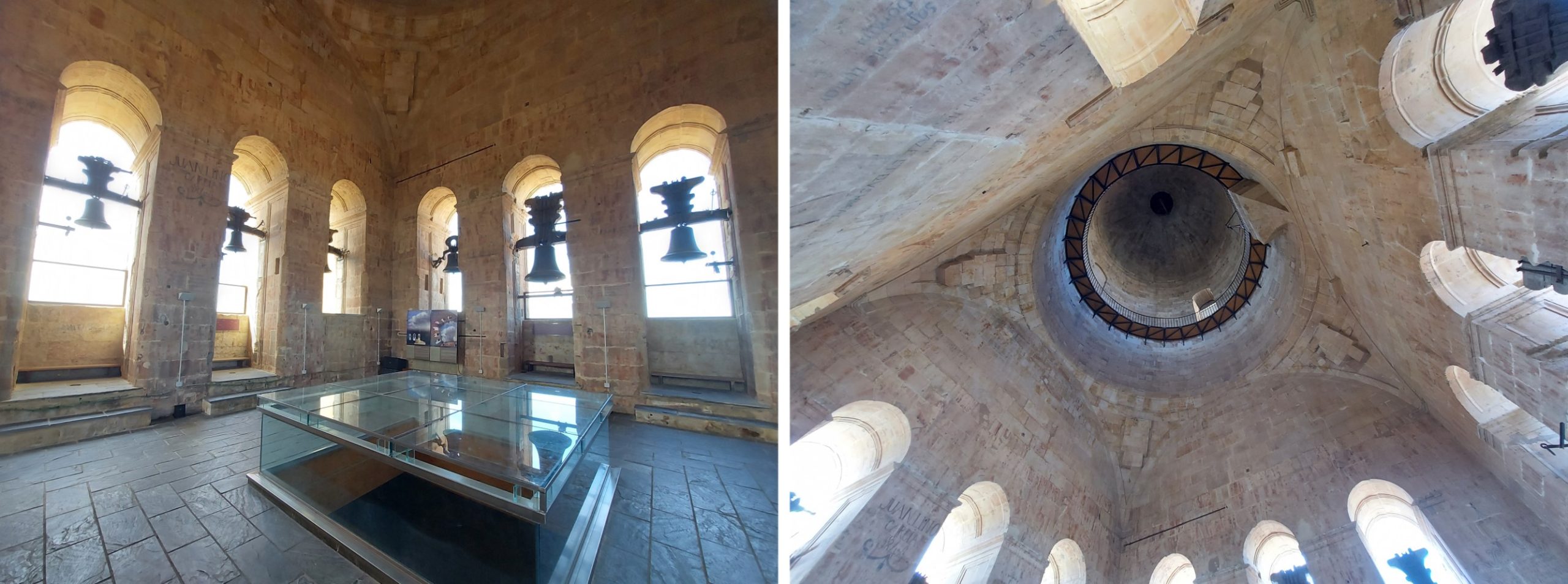

The splendid collection of the tower’s belfry is made up of a set of eleven large pieces, located in the tower’s arches, plus the largest bell located in the balcony of the octagonal balcony.
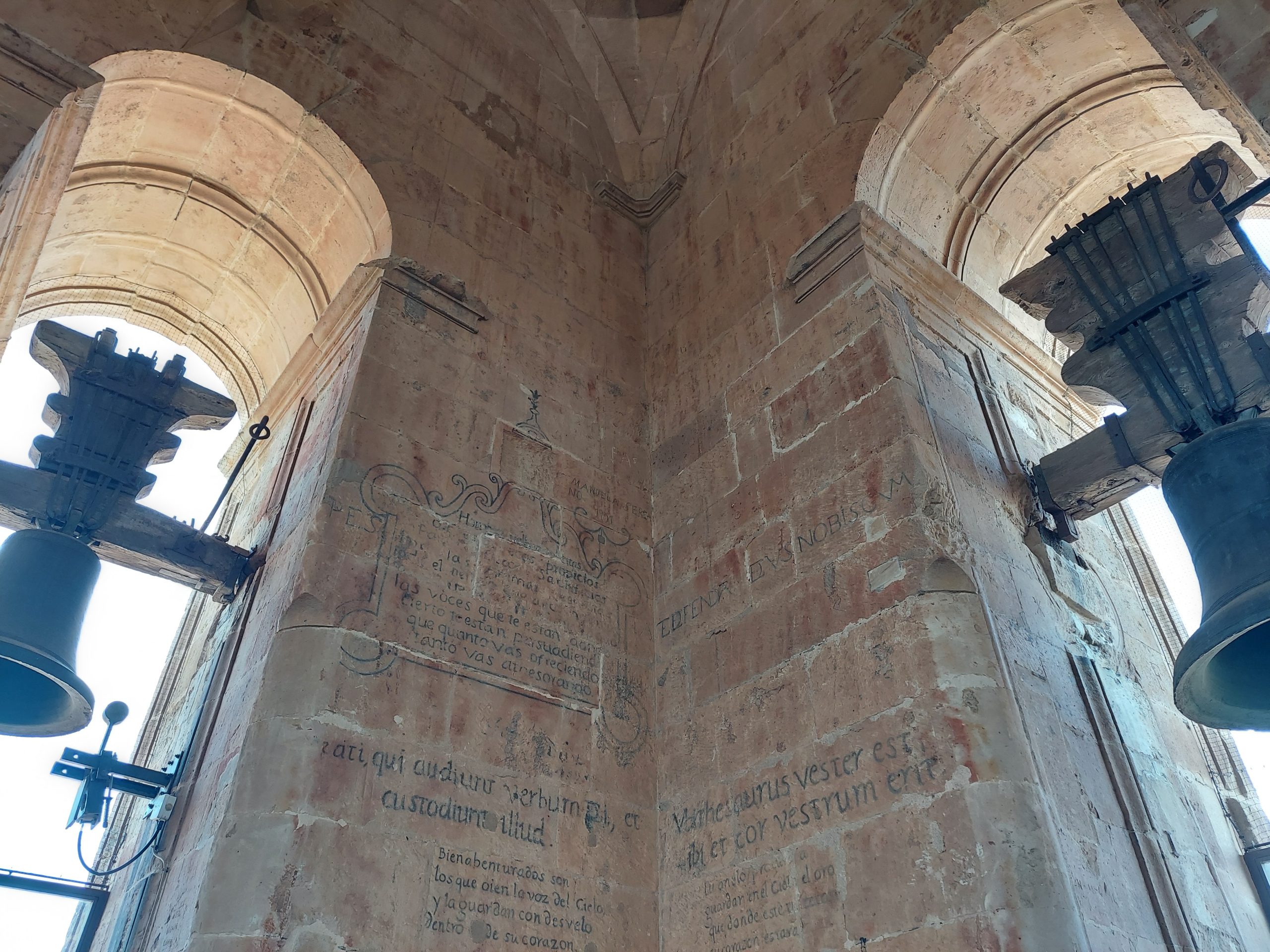
On the walls of the room you can see inscriptions that have been preserved as a tribute to the pilgrims who in times past left a sign of their presence.
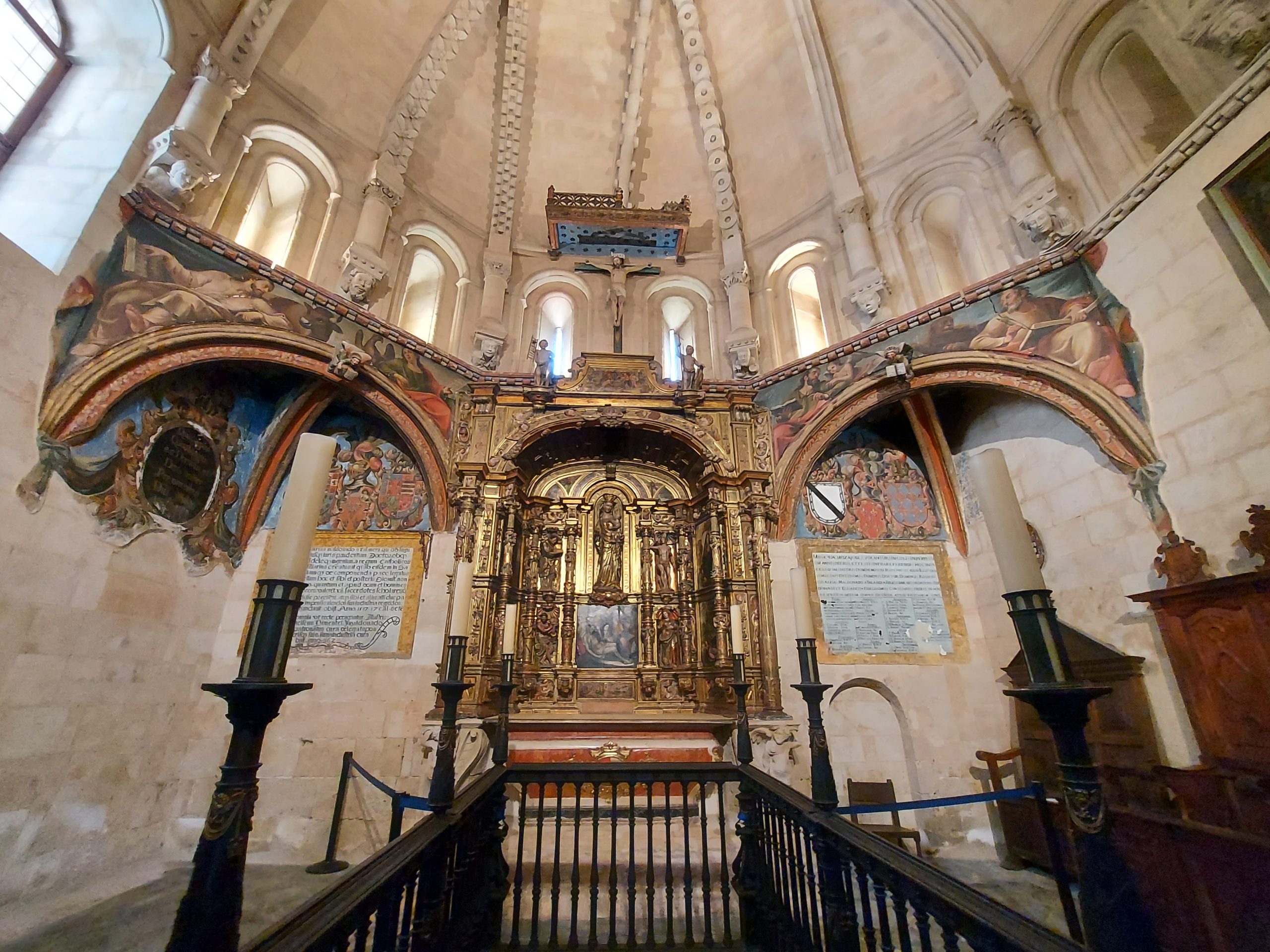
The Old Cathedral of Salamanca was on the verge of being destroyed, since when the New Cathedral was planned it was thought to be demolished. However, that initial idea was abandoned thanks to the time that elapsed from the beginning of the works of the New Cathedral, by the year 1520 and its late date of conclusion, around 1733.
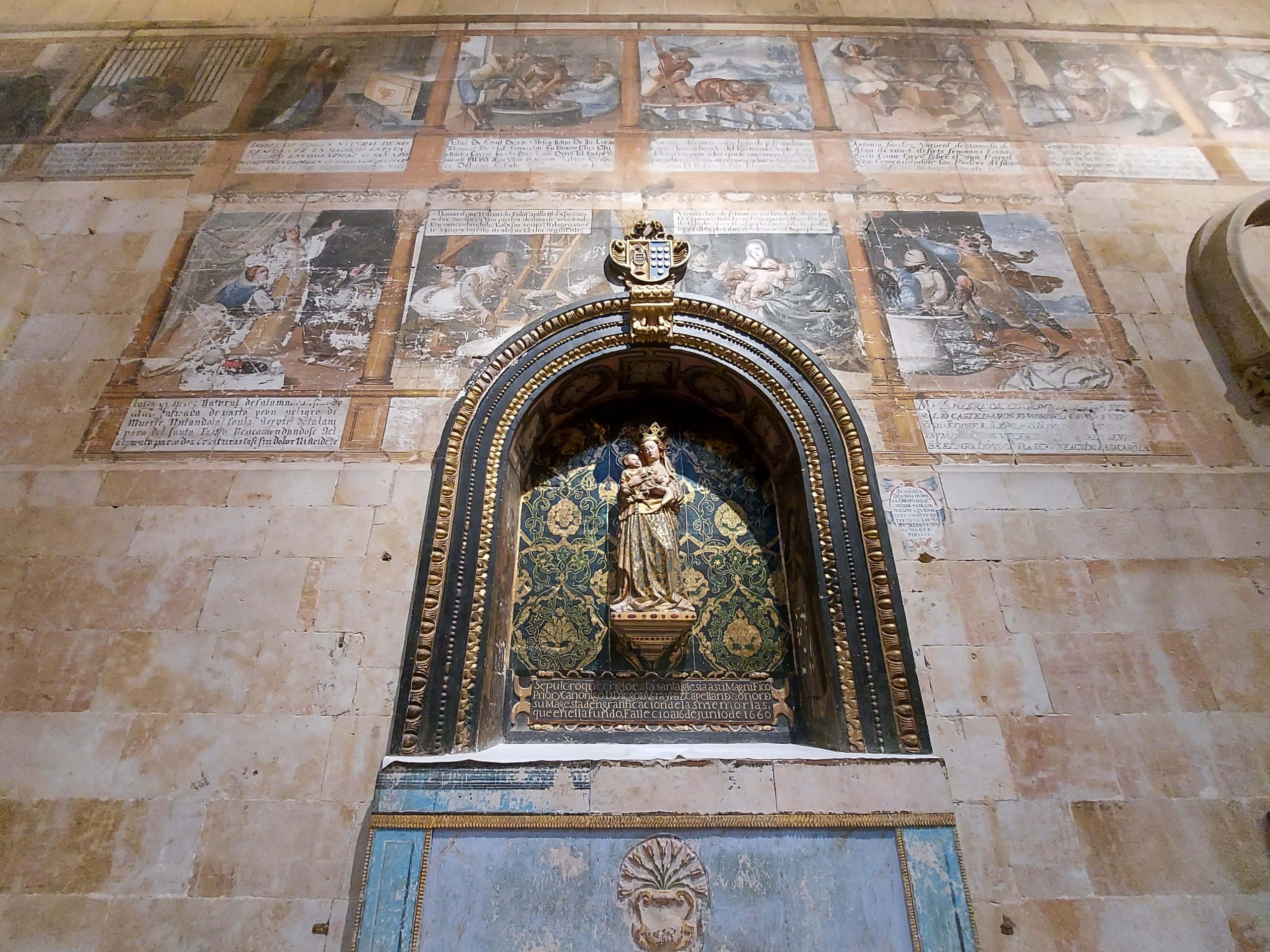
In addition, the need for a place to worship while the construction was being completed did not allow its demolition. Although it seems that modifications were unavoidable. For example, in terms of plan, the left nave appears narrower and part of the transept arm is missing, as a consequence of the construction of the New Cathedral. In any case, it is a blessing to be able to enjoy this magnificent Romanesque work today.
* Diocese of Salamanca: The Hispanic Mozarabic rite was the proper way of celebrating the liturgy, during the first millennium of Christianity, in the churches within the Iberian Peninsula. This liturgy grew and flourished during the Visigothic period, and survived the Muslim invasion, until it was officially suppressed in the 11th century by order of Pope Gregory VII in order to introduce the Roman rite, which is currently followed in most of the Catholic Church. However, several parishes in the city of Toledo had the privilege of continuing to celebrate in that rite.
Salamanca joined Toledo in the conservation of this liturgy in the 16th century, thanks to Mr. Maldonado Talavera, who observed how next to the Tormes River there was a group of Mozarabs and requested the Chapter to celebrate that rite in the Cathedral, acquiring the chapel of El Salvador, in the Old Cathedral, known as the chapel of Talavera, where the Mozarabic chapel was instituted establishing a calendar of 52 annual masses that later with time disappeared.
———–
Resources:
www.diocesisdesalamanca.com/noticias/misa-en-rito-hispano-mozarabe-en-la-fiesta-de-santiago-apostol/
es.wikipedia.org/wiki/Catedral_Vieja_de_Salamanca
catedralsalamanca.org/catedral-vieja/
